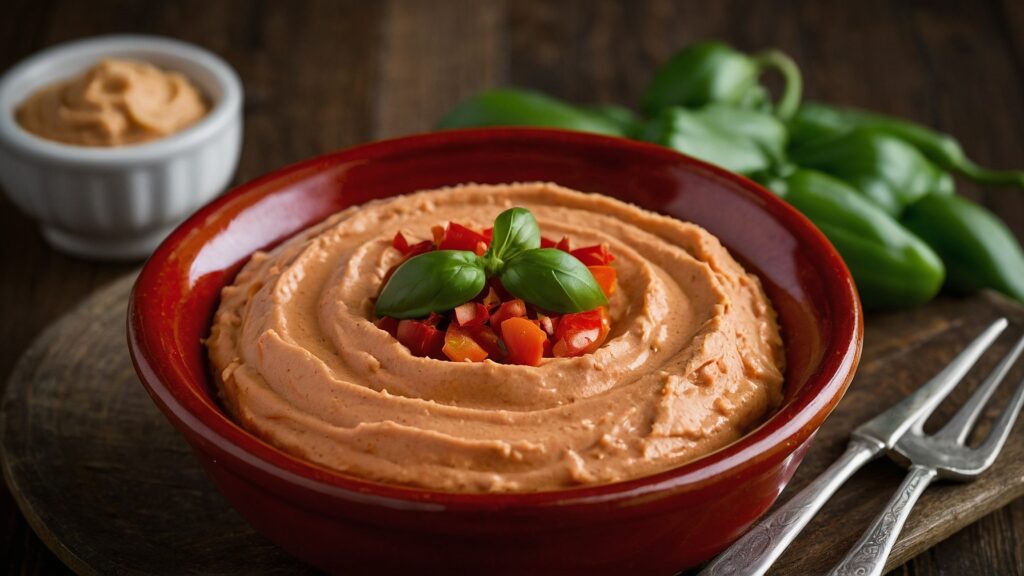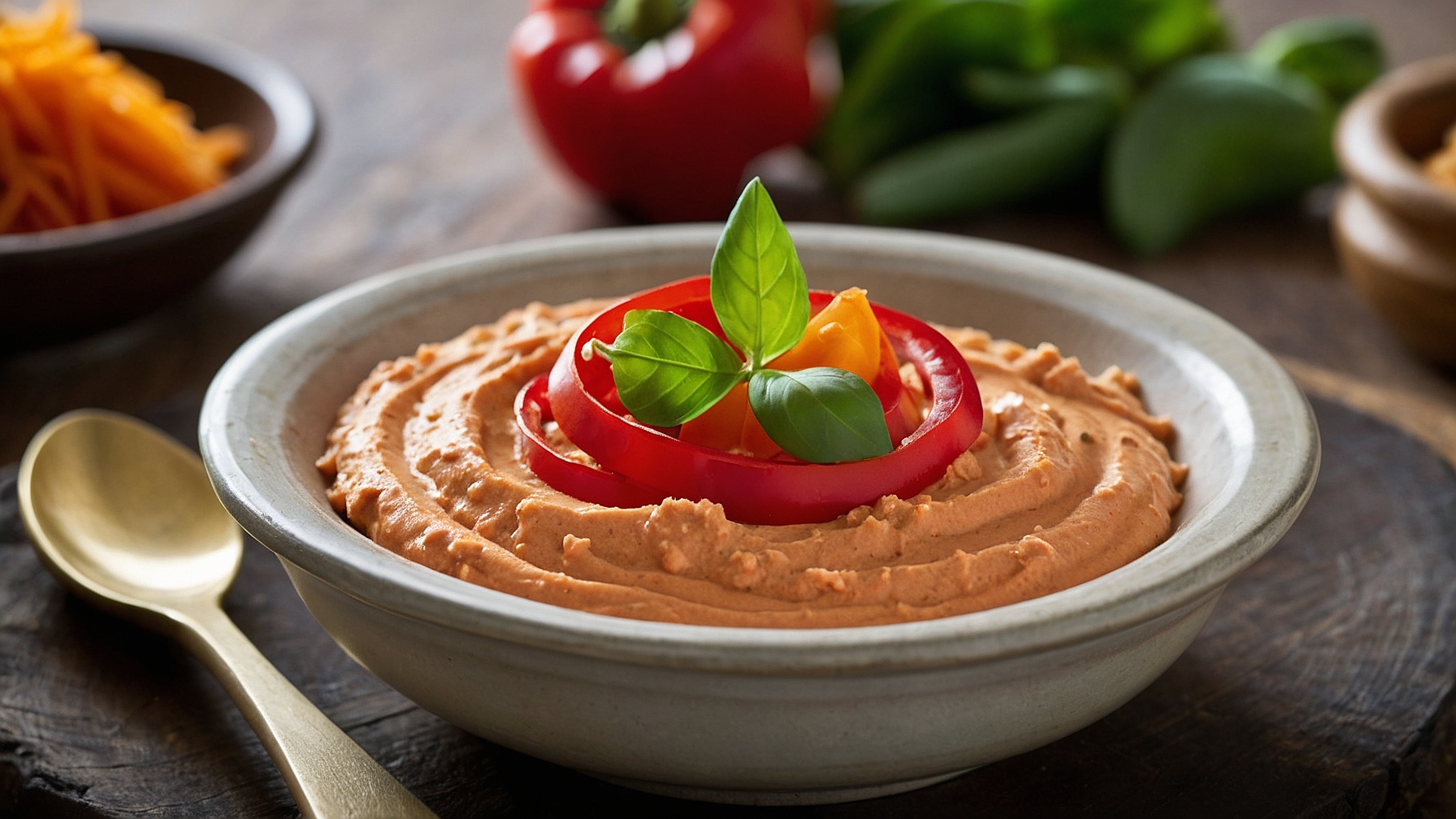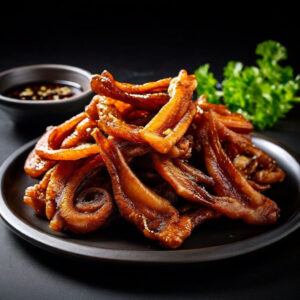As a cat owner, you’ve probably caught your feline friend eyeing your snacks with curiosity. And if you’re a fan of hummus, you may have wondered, “Can cats eat red pepper hummus?” While this Middle Eastern dip might seem like an unlikely treat for our feline companions, the answer is more complex than a simple yes or no.
Cats are obligate carnivores, meaning their bodies are designed to primarily digest and derive nutrients from animal-based proteins. However, that doesn’t mean they can’t benefit from the occasional plant-based snack in moderation. In fact, some plant foods can provide essential vitamins, minerals, and fiber to supplement a cat’s diet.
But before you start sharing your red pepper hummus with your furry friend, it’s important to understand the potential risks and benefits of each ingredient. In this comprehensive guide, we’ll explore the intricacies of this beloved dip and whether it’s safe for your feline companion to indulge.
Table of Contents
The Ingredients in Red Pepper Hummus
To determine if cats can eat red pepper hummus, we need to take a closer look at its components. Here’s a breakdown of the key ingredients and their potential impact on your cat’s health.
Chickpeas/Garbanzo Beans
Chickpeas, also known as garbanzo beans, are the main ingredient in traditional hummus. These legumes are rich in protein, fiber, and various vitamins and minerals, including folate, iron, and phosphorus.
Are Chickpeas Safe for Cats?
While chickpeas are not toxic to cats, they are not a natural part of a feline’s diet. Cats lack the necessary enzymes to break down plant-based proteins efficiently, which can lead to digestive issues if consumed in large quantities.
However, a small amount of chickpeas can provide some benefits:
- Protein Source: Chickpeas are a good source of plant-based protein, which can be beneficial for cats as a supplement to their mainly animal-based diet.
- Fiber: The fiber content in chickpeas can aid in digestion and help prevent constipation in cats.
Potential Risks:
- Digestive Issues: Too many chickpeas can cause gastrointestinal upset, such as vomiting, diarrhea, or gas, due to their high fiber content and the difficulty cats have in digesting plant-based proteins.
- Allergic Reactions: While rare, some cats may be allergic to chickpeas, resulting in skin irritation, respiratory issues, or other allergic symptoms.
Tahini (Sesame Seed Paste)
Tahini is a paste made from ground sesame seeds, which provides a nutty flavor and creamy texture to hummus.
Is Tahini Toxic to Cats?
Tahini itself is not toxic to cats, but sesame seeds and their derivatives can potentially cause issues for some felines.
Potential Risks:
- Allergic Reactions: Like many nuts and seeds, sesame seeds can trigger allergic reactions in cats, leading to symptoms such as vomiting, diarrhea, or skin irritation.
- Digestive Issues: The high-fat content in tahini may cause gastrointestinal distress, including diarrhea or pancreatitis, in some cats.
While tahini is not inherently dangerous for cats, it’s best to introduce it cautiously and in small amounts due to the potential for allergic reactions or digestive issues.
Red Peppers
Red peppers not only give hummus its vibrant color but also add a delightful kick of spicy flavor.
The Potential Dangers of Capsaicin for Felines
The compound responsible for the heat in red peppers is called capsaicin, and it can be problematic for cats. Unlike humans, cats lack the ability to taste capsaicin as spicy or hot. Instead, it can cause severe irritation and burning sensations in their mouths, throats, and digestive tracts.
Risks of Red Peppers for Cats:
- Gastrointestinal Distress: Ingesting red peppers or their oils can lead to vomiting, diarrhea, and abdominal pain in cats.
- Respiratory Issues: Inhaling capsaicin vapors or oils can cause coughing, wheezing, and difficulty breathing in felines.
- Skin and Eye Irritation: Contact with red pepper oils can result in skin irritation, redness, and eye discomfort or injury.
It’s generally recommended to avoid feeding red peppers or spicy foods to cats, as the potential risks outweigh any potential benefits.
Garlic and Onions
While garlic and onions are common flavor enhancers in hummus, they are toxic to cats and should never be fed to them intentionally.
Why These Are Big No-Nos for Cat Diets
Garlic and onions, as well as other members of the Allium family (chives, leeks, shallots), contain compounds called disulfides and thiosulphates. These compounds can damage red blood cells in cats, leading to a condition called hemolytic anemia.
Symptoms of garlic or onion toxicity in cats may include:
- Lethargy
- Weakness
- Pale gums and mucous membranes
- Rapid breathing or panting
- Vomiting
- Diarrhea
Even small amounts of garlic or onion can be harmful to cats, so it’s crucial to avoid feeding them any foods containing these ingredients.
Olive Oil
Olive oil is a common addition to hummus recipes, providing a rich, creamy texture and a distinctive flavor.
Healthy Fats or Potential for Digestive Issues?
Olive oil is generally considered safe for cats in small quantities, as it contains monounsaturated fats that can benefit their skin and coat health.
Potential Benefits:
- Healthy Fats: The monounsaturated fats in olive oil can support a healthy skin and coat in cats.
- Omega-3 and Omega-6 Fatty Acids: These essential fatty acids found in olive oil play a role in promoting overall health and well-being.
Potential Risks:
- Digestive Issues: Too much olive oil can lead to gastrointestinal upset, such as diarrhea or vomiting, due to its high-fat content.
- Pancreatitis: Excessive consumption of fatty foods like olive oil can increase the risk of pancreatitis in cats, a potentially life-threatening condition.
While olive oil can be beneficial in moderation, it’s essential to introduce it gradually and in small amounts to avoid digestive issues or other health problems.
Can Cats Eat Red Pepper Hummus? The Pros and Cons
Now that we’ve explored the individual ingredients in red pepper hummus, let’s consider the overall safety and nutritional value of this dip for our feline friends.
Protein Content (from Chickpeas)
One potential benefit of hummus for cats is its protein content, thanks to the chickpeas used as the base. Cats are obligate carnivores, meaning they require a diet rich in animal-based proteins to thrive.
While chickpeas are a plant-based protein source, they can provide some supplemental protein to a cat’s diet. However, it’s important to note that plant-based proteins are not as easily digestible for cats as animal-based proteins.
Potential Allergic Reactions
As mentioned earlier, some cats may develop allergic reactions to certain ingredients in hummus, such as sesame seeds (tahini) or chickpeas. Allergic reactions can manifest in various ways, including:
- Skin irritation or rashes
- Vomiting or diarrhea
- Respiratory issues (coughing, wheezing)
- Excessive scratching or licking
If you notice any of these symptoms after introducing hummus to your cat’s diet, discontinue feeding it and consult with your veterinarian.
Risk of Gastrointestinal Issues
The high-fiber content in chickpeas, combined with the potential for digestive issues from ingredients like olive oil or red peppers, can lead to gastrointestinal distress in some cats.
Symptoms of gastrointestinal issues may include:
- Vomiting
- Diarrhea
- Constipation
- Loss of appetite
- Abdominal pain or discomfort
Cats have sensitive digestive systems, and introducing new foods, especially those high in fiber or fat, can disrupt their normal gut function.
Lack of Taurine and Essential Cat Nutrients
While hummus contains some beneficial nutrients, it lacks several essential compounds that cats require for optimal health, such as taurine.
Taurine is an amino acid vital for:
- Proper heart function
- Vision
- Healthy digestion
- Reproductive health
Cats cannot produce enough taurine on their own, so they must obtain it from their diet, primarily through animal-based proteins.
Additionally, hummus is deficient in other critical nutrients for cats, including:
- Vitamin A
- Vitamin B12
- Niacin
- Thiamine
- Arginine
These nutrients are typically found in high-quality, balanced cat foods formulated to meet a feline’s specific nutritional requirements.
What If My Cat Accidentally Eats Red Pepper Hummus?

Despite our best efforts, accidents can happen, and our feline friends may occasionally indulge in foods they shouldn’t. If your cat accidentally eats red pepper hummus, here’s what you need to know:
Signs of Potential Food Poisoning or Allergic Reaction
If your cat has consumed a significant amount of red pepper hummus, be on the lookout for the following signs of potential food poisoning or allergic reaction:
- Vomiting
- Diarrhea
- Lethargy
- Loss of appetite
- Excessive drooling or pawing at the mouth
- Difficulty breathing
- Skin irritation or rashes
If you notice any of these symptoms, it’s crucial to seek veterinary attention immediately, as some reactions can be life-threatening.
When to Call the Vet
If your cat has only licked or consumed a small amount of red pepper hummus, monitor them closely for any adverse reactions. However, if they have ingested a significant quantity or are exhibiting concerning symptoms, don’t hesitate to contact your veterinarian.
It’s better to err on the side of caution, as some ingredients in hummus, such as garlic or onions, can be toxic to cats in small amounts.
First Aid Tips
While waiting for veterinary assistance, you can take the following first aid measures:
- Provide fresh water to encourage hydration and help flush out any remaining hummus from their system.
- If your cat is drooling excessively or pawing at their mouth, you can gently rinse their mouth with water to remove any remaining hummus or irritants.
- Keep your cat calm and comfortable until you can get them to the vet.
Remember, it’s always best to consult with a professional if you have any concerns about your cat’s health or safety.
Safer Alternatives for Feline Snacks
While red pepper hummus may not be the safest or most nutritious option for your cat, there are plenty of feline-friendly snacks and treats available. Here are some healthier alternatives:
Cat-Friendly Fruits and Veggies
Many cats enjoy the occasional taste of fresh fruits and vegetables, which can provide essential vitamins, minerals, and fiber. Some safe options for feline snacking include:
- Cooked pumpkin or sweet potato (plain, unseasoned)
- Steamed broccoli or carrots
- Bananas (in moderation)
- Cantaloupe or watermelon (seedless)
Always introduce new foods slowly and in small amounts to monitor for any adverse reactions.
Healthy Cat Treat Recipes
If you’d like to make your own cat treats at home, there are plenty of healthy, feline-friendly recipes available. Here are a few examples:
- Tuna Treats: Mix canned tuna (water-packed), whole wheat flour, and a bit of catnip for a protein-packed treat.
- Chicken Jerky: Bake thin strips of boneless, skinless chicken breast for a low-calorie, high-protein snack.
- Salmon Bites: Combine cooked salmon, oat flour, and a bit of olive oil for a tasty, omega-3-rich treat.
Always consult a veterinarian or pet nutritionist before introducing homemade treats to ensure they meet your cat’s dietary needs.
Commercial Cat Treats
If you prefer the convenience of store-bought treats, look for high-quality, feline-formulated options. Choose treats that:
- Are made with real meat or fish as the first ingredient
- Have minimal fillers, artificial preservatives, or added sugars
- Provide essential nutrients like taurine and other vitamins and minerals
Some reputable cat treat brands to consider include:
- Orijen
- Ziwi Peak
- Feline Natural
- Feline Greenies
Remember, treats should make up no more than 10% of your cat’s daily caloric intake to maintain a balanced diet.
The Importance of Portion Control
Regardless of the snack or treat you choose, it’s crucial to practice portion control. Overfeeding cats, even with healthy snacks, can lead to obesity and related health issues such as diabetes, joint problems, and decreased mobility.
Consult with your veterinarian to determine the appropriate portion sizes and treat frequency based on your cat’s age, activity level, and overall health.
How to Safely Introduce New Foods to Your Cat’s Diet
If you’ve decided to introduce new foods or snacks to your cat’s diet, it’s essential to do so gradually and under the guidance of a veterinary professional. Here are some tips for safely incorporating new foods:
Advice from Veterinary Experts
Veterinarians and pet nutritionists recommend the following best practices when introducing new foods to a cat’s diet:
- Start with small amounts, gradually increasing over time.
- Monitor for any adverse reactions, such as vomiting, diarrhea, or changes in behavior.
- Ensure the new food is nutritionally balanced and appropriate for your cat’s life stage and health condition.
- Avoid sudden dietary changes, as cats can develop digestive issues from abrupt transitions.
Consulting with your veterinarian can help ensure you’re making safe and healthy choices for your cat’s specific needs.
Going Slow and Watching for Adverse Reactions
When introducing a new food, start with a tiny amount, such as a teaspoon or less, and observe your cat’s reaction. If there are no adverse effects after 24 hours, you can gradually increase the portion size over several days or weeks.
Be vigilant for signs of digestive upset, allergic reactions, or other concerning symptoms, and discontinue the new food if any issues arise.
Sticking to a Nutrient-Complete Diet as the Staple
While occasional treats or snacks can be a fun way to enrich your cat’s diet, it’s essential to ensure their primary food source is a high-quality, nutrient-complete feline diet.
Commercial cat foods are formulated to provide the correct balance of proteins, fats, vitamins, minerals, and other essential nutrients your cat needs to thrive. Treats should never make up more than 10% of their daily caloric intake.
By following these guidelines and consulting with your veterinarian, you can safely introduce new foods to your cat’s diet while maintaining their overall health and well-being.
Conclusion
In conclusion, while red pepper hummus may seem like an enticing snack for curious felines, it’s generally not recommended as a regular treat for cats. The combination of ingredients, such as chickpeas, tahini, red peppers, garlic, and onions, can pose various risks, including digestive issues, allergic reactions, and potential toxicity.
However, an occasional lick or small taste of plain hummus (without the spicy red peppers or other concerning ingredients) is unlikely to cause significant harm, as long as you monitor your cat closely for any adverse reactions.
If your cat does accidentally consume a substantial amount of red pepper hummus, it’s essential to seek veterinary advice and watch for signs of discomfort or illness.
Can cats eat chickpeas?
Cats can consume chickpeas (garbanzo beans) in small quantities as an occasional treat. However, they should not be a regular part of a cat’s diet as cats lack the necessary enzymes to efficiently digest plant-based proteins. Too many chickpeas can lead to digestive issues like vomiting, diarrhea, or gas.
Is tahini (sesame seed paste) toxic to cats?
Tahini itself is not toxic to cats, but sesame seeds and their derivatives can potentially cause allergic reactions in some felines. Symptoms may include vomiting, diarrhea, skin irritation, or respiratory issues. It’s best to introduce tahini cautiously and in small amounts.
Why are red peppers dangerous for cats?
The compound capsaicin, which gives red peppers their spicy flavor, can cause severe irritation and burning sensations in a cat’s mouth, throat, and digestive tract. Ingesting red peppers can lead to vomiting, diarrhea, abdominal pain, respiratory issues, skin irritation, and eye discomfort or injury.
Are garlic and onions safe for cats?
No, garlic and onions (and other members of the Allium family) are toxic to cats and should never be fed to them intentionally. These ingredients can damage red blood cells and cause hemolytic anemia, a potentially life-threatening condition.
Can olive oil be included in a cat’s diet?
Olive oil is generally safe for cats in small quantities as it provides healthy monounsaturated fats. However, too much olive oil can lead to digestive issues like diarrhea or pancreatitis. It should be introduced gradually and in moderation.
References
- Cornell University College of Veterinary Medicine. https://www.vet.cornell.edu/departments-centers-and-institutes/cornell-feline-health-center/health-information/feline-health-topics/common-cat-hazards-0




